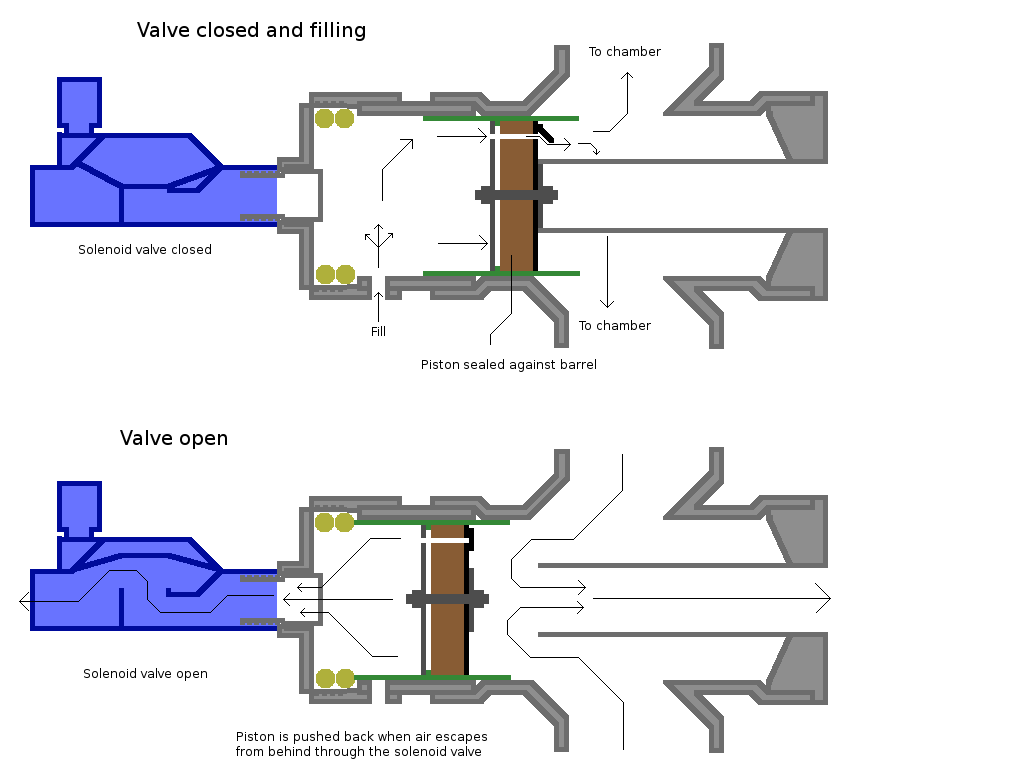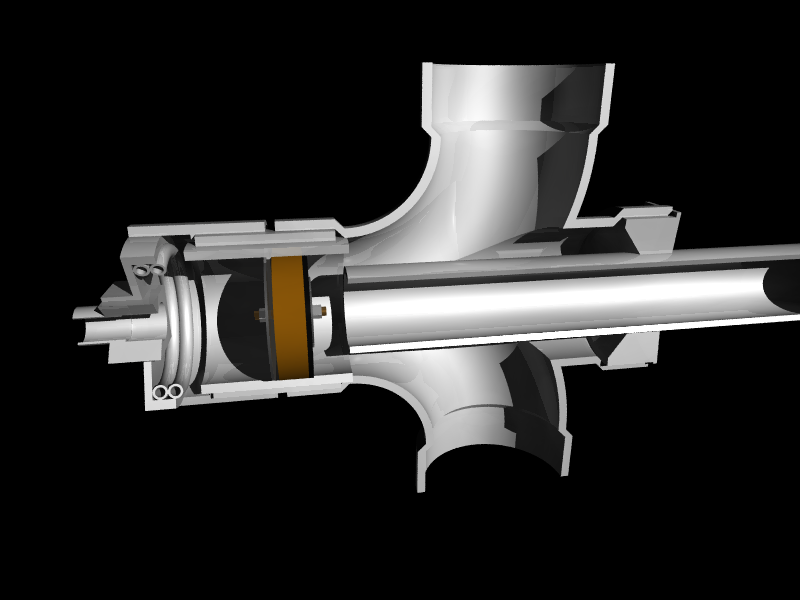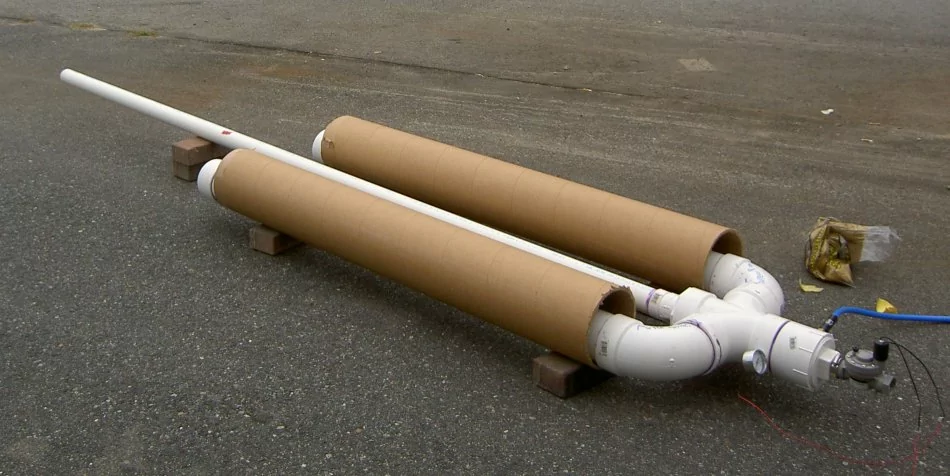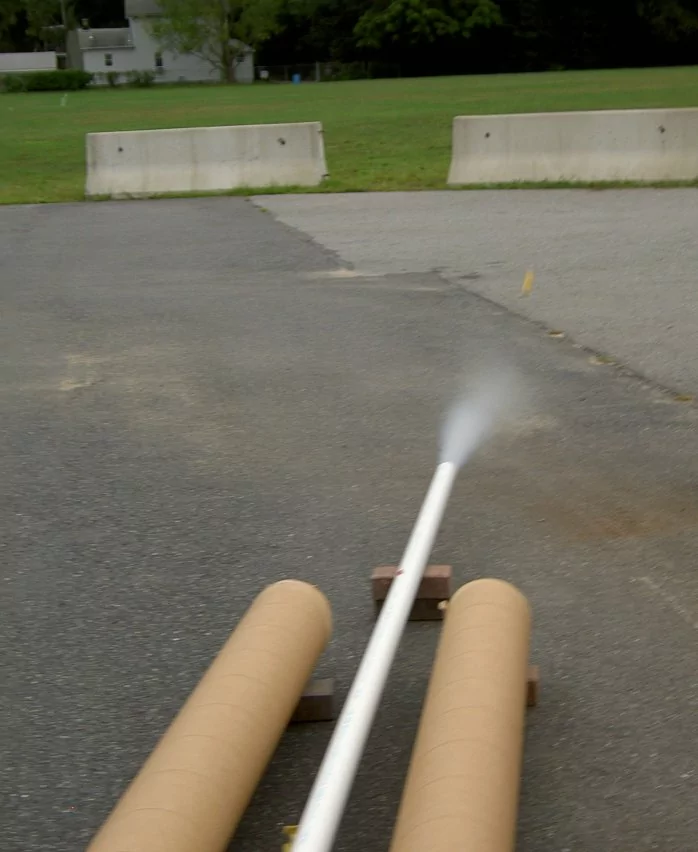mark 2
The Mark 2 is a massive air cannon, featuring a 9' long, 2" diameter barrel, and 10' of 4" pipe for a chamber. Gating the airflow is a self-made piston valve built into the 4" cross, that can open to the entire 2" diameter of the barrel.
This cannon was built for power, which it had in quantity, but its design is somewhat awkward and inefficient. The chamber is far too large for the barrel, with almost 4x the volume, meaning that most of the energy of the compressed air went to waste. The piston valve, though effective, was not reliable enough. The tuning fork arrangement of chambers as well as the barrel between them requires substantial support; I never built a full structure for it.
piston valve
The most important feature of this cannon is the primary valve. It consists of a sliding piston that is sealed against the barrel by air pressure when the cannon is pressurized. To fire the cannon, a sprinkler valve (much like the primary valves of the Mark 1) dumps the air in the small volume behind the piston. This allows the air pressure on the other side to push the piston backward before the pressure can equalize, forcing the piston backward and exposing the end of the barrel.
operation
In operation, this cannon fired mostly potatoes; the barrel has a chamfer on the end to cut potatoes to size for a tight fit in the barrel. When shot from this cannon, even a potato has astounding destructive power. Unfortunately there are not many photos of this cannon in action; what's here is all there is.






